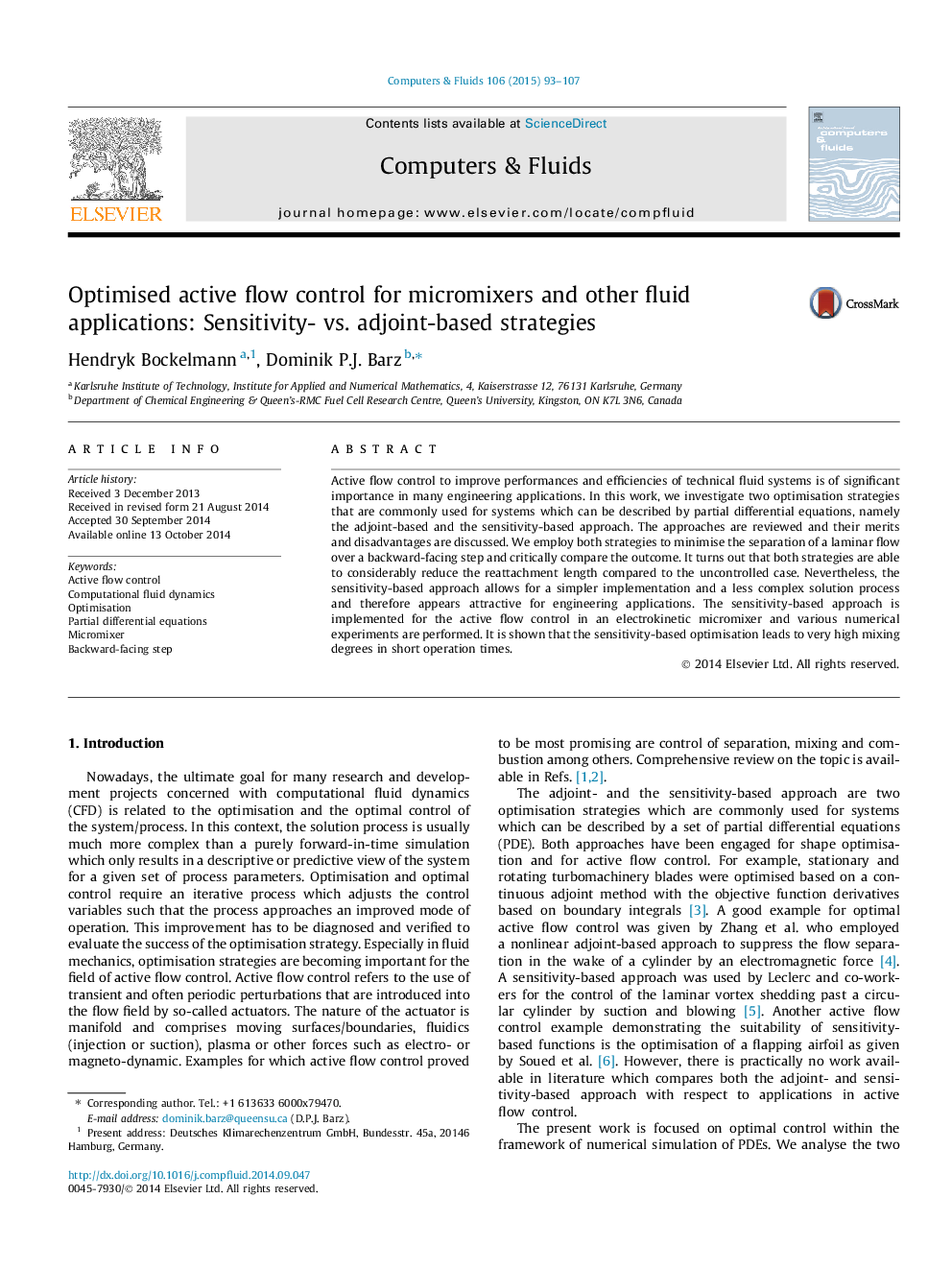| Article ID | Journal | Published Year | Pages | File Type |
|---|---|---|---|---|
| 761629 | Computers & Fluids | 2015 | 15 Pages |
•Adjoint- and sensitivity-based optimisations are investigated for active flow control.•Comprehensive review of both optimisation strategies is given.•Both methods are applied to control the laminar flow over a backward-facing step.•Sensitivity-based approach is chosen to optimise an electrically-excited micromixer.
Active flow control to improve performances and efficiencies of technical fluid systems is of significant importance in many engineering applications. In this work, we investigate two optimisation strategies that are commonly used for systems which can be described by partial differential equations, namely the adjoint-based and the sensitivity-based approach. The approaches are reviewed and their merits and disadvantages are discussed. We employ both strategies to minimise the separation of a laminar flow over a backward-facing step and critically compare the outcome. It turns out that both strategies are able to considerably reduce the reattachment length compared to the uncontrolled case. Nevertheless, the sensitivity-based approach allows for a simpler implementation and a less complex solution process and therefore appears attractive for engineering applications. The sensitivity-based approach is implemented for the active flow control in an electrokinetic micromixer and various numerical experiments are performed. It is shown that the sensitivity-based optimisation leads to very high mixing degrees in short operation times.
